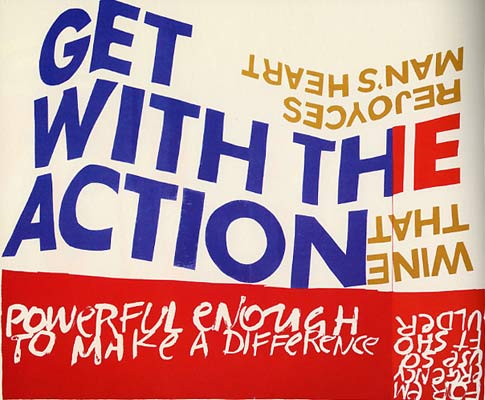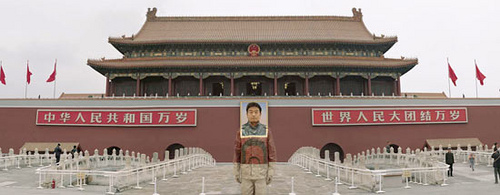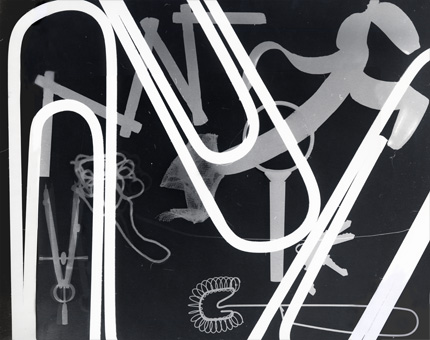Sister Corita
what red looks like
“Mary knows everything there is to know about the colour red. As a scientist, it has been her life’s work. If you want to know why we can’t see infrared, why tomatoes are red or why red is the colour of passion, Mary is your woman.
All this would be unremarkable, if it weren’t for the fact that Mary is an achromat: she has no colour vision at all. The world, for Mary, looks like a black and white movie.
Now, however, all that is to change. The cones on her retina are not themselves defective, it is simply that the signals are not processed by the brain. Advances in neurosurgery now mean that this can be fixed. Mary will soon see the world in colour for the first time.
So despite her wide knowledge, perhaps she doesn’t know everything about the colour red after all. There is one thing left for her to find out: what red looks like.”
—Julian Baggini, The Pig That Wants to Be Eaten, 2005.
Liu Bolin
redlighted
“ ‘You heard Uncle Al. If anything happens to that horse, you’ll be redlighted.’
Fuck You
I don’t like to use dashes
“[W]hat vexes me is that Albert does not seem to be as delighted as he—hoped—as I—thought I was—when—I don’t like to use dashes, but here I can’t express myself any other way— . . . .”
—Johann Wolfgang von Goethe, The Sorrows of Young Werther, 1774; translated by Burton Pike, 2004.
Does Herbert Matter?
what is the world to our heart without love?
“Wilhelm, what is the world to our heart without love? What a magic lantern is without light! As soon as you put the little lamp inside, the most colorful pictures appear on your white wall!”
Track Meet
the reds and greens, the yellows and blues
—Gore Vidal, Julian, 1964.



